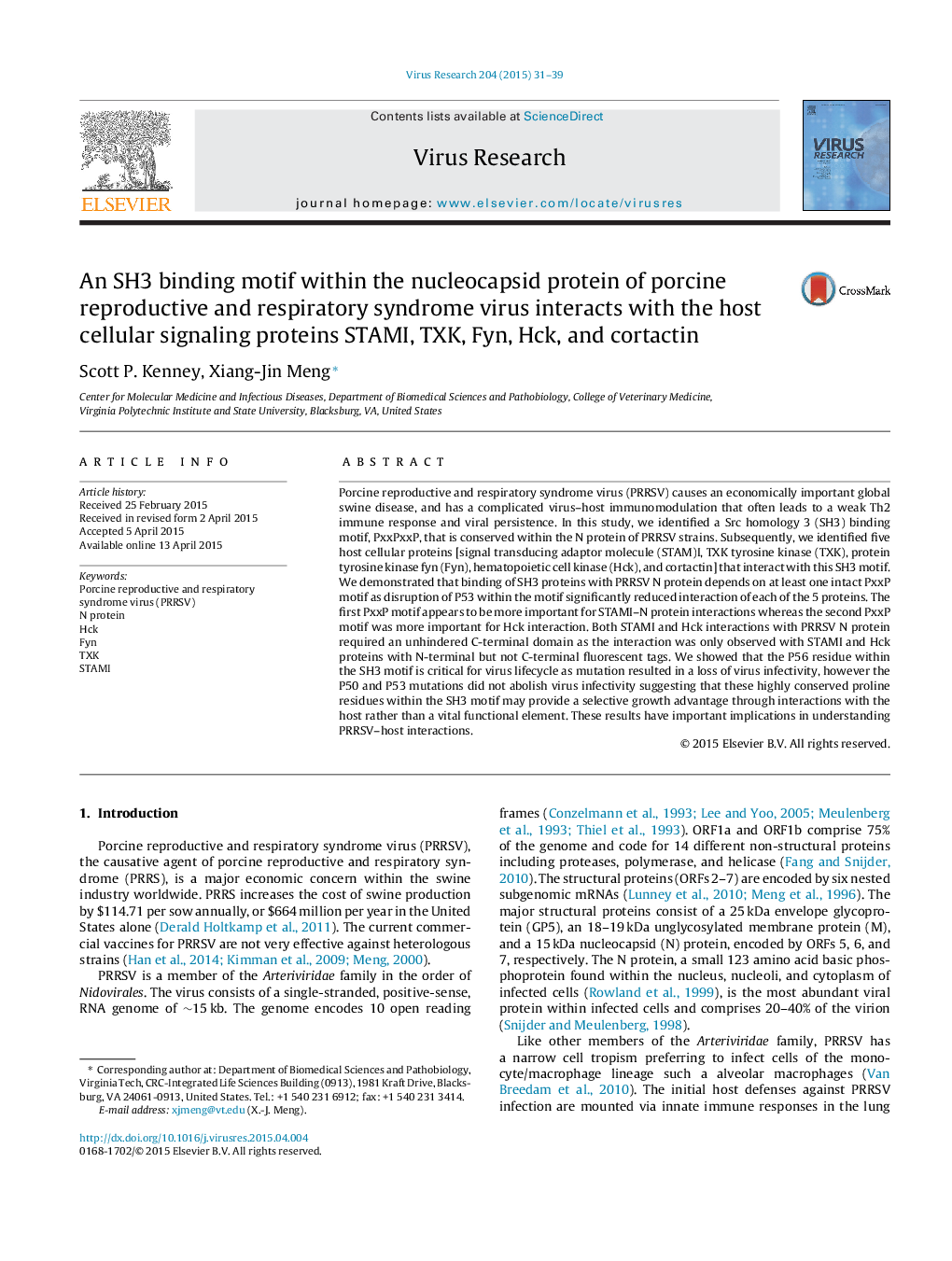| کد مقاله | کد نشریه | سال انتشار | مقاله انگلیسی | نسخه تمام متن |
|---|---|---|---|---|
| 3428253 | 1594353 | 2015 | 9 صفحه PDF | دانلود رایگان |

• PRRSV N protein contains a conserved SH3 amino acid motif.
• N protein interacts with the host proteins STAMI, TXK, Fyn, Hck, and cortactin.
• N/host protein interactions are specific to the PxxPxxP amino acid motif.
• N protein prolines 50 and 53 are dispensable for replication, 56 is critical.
Porcine reproductive and respiratory syndrome virus (PRRSV) causes an economically important global swine disease, and has a complicated virus–host immunomodulation that often leads to a weak Th2 immune response and viral persistence. In this study, we identified a Src homology 3 (SH3) binding motif, PxxPxxP, that is conserved within the N protein of PRRSV strains. Subsequently, we identified five host cellular proteins [signal transducing adaptor molecule (STAM)I, TXK tyrosine kinase (TXK), protein tyrosine kinase fyn (Fyn), hematopoietic cell kinase (Hck), and cortactin] that interact with this SH3 motif. We demonstrated that binding of SH3 proteins with PRRSV N protein depends on at least one intact PxxP motif as disruption of P53 within the motif significantly reduced interaction of each of the 5 proteins. The first PxxP motif appears to be more important for STAMI–N protein interactions whereas the second PxxP motif was more important for Hck interaction. Both STAMI and Hck interactions with PRRSV N protein required an unhindered C-terminal domain as the interaction was only observed with STAMI and Hck proteins with N-terminal but not C-terminal fluorescent tags. We showed that the P56 residue within the SH3 motif is critical for virus lifecycle as mutation resulted in a loss of virus infectivity, however the P50 and P53 mutations did not abolish virus infectivity suggesting that these highly conserved proline residues within the SH3 motif may provide a selective growth advantage through interactions with the host rather than a vital functional element. These results have important implications in understanding PRRSV–host interactions.
Journal: Virus Research - Volume 204, 2 June 2015, Pages 31–39